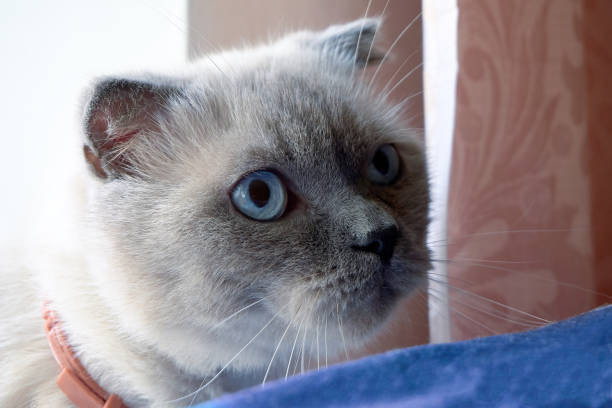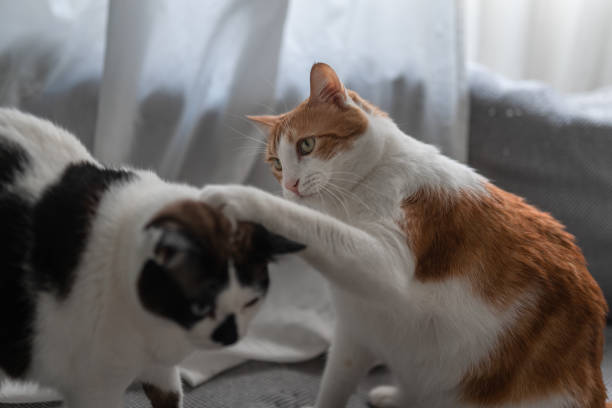Understanding Your Cat’s Body Language: What Are They Trying to Tell You?
Cats are known for their mysterious and often subtle communication. Understanding your cat’s body language is crucial to building a better relationship and ensuring their well-being. In this guide, we’ll explore various common cat behaviors and what they mean, helping you decode your feline friend’s feelings and needs.
Table of Contents
1. The Tail: A Communication Tool

- Tail Up, Slightly Curved at the Tip: This is a sign of a happy and friendly cat. Your cat is feeling confident and content.
- Tail Puffing Out: If your cat’s tail becomes puffed up, they are likely startled or feeling threatened. It’s a defensive reaction to make themselves appear larger.
- Twitching or Flicking Tail: A fast-twitching or flicking tail often indicates irritation or excitement. If it’s moving quickly, it’s best to give your cat some space.
2. Ears: Alert or Relaxed

- Ears Forward: When your cat’s ears are perked forward, they are alert, curious, or interested in something around them.
- Ears Flattened Against the Head: This usually indicates fear, aggression, or discomfort. It’s a sign that your cat is feeling threatened and may lash out.
- Ears Slightly to the Side: This is a sign of uncertainty or nervousness. Your cat may be assessing a situation and deciding how to react.
3. Eyes: Windows to the Soul

- Slow Blinking: A slow blink from your cat is like a kitty kiss. It’s a sign of trust and affection. You can blink slowly back to return the gesture.
- Dilated Pupils: Wide, dilated pupils can indicate excitement, fear, or arousal. If paired with a puffed-up tail, your cat is likely scared. If your cat is playing, the dilated pupils indicate excitement.
- Half-Closed Eyes: This means your cat is relaxed and feeling safe. They might be dozing or in a calm mood.
4. Posture: Relaxed vs. Defensive

- Relaxed, Lying on Their Side: This is a sign that your cat is feeling secure and comfortable. They trust their environment and are not anticipating any threats.
- Arched Back with Raised Fur: This defensive posture means your cat is scared or ready to defend themselves. It’s often accompanied by hissing or growling.
- Crouched with Ears Back: Your cat may be feeling fearful or anxious. They’re in a defensive mode and may be preparing to flee or fight.
5. Vocalization: What Are They Saying?

- Purring: While purring is often a sign of contentment, it can also indicate that your cat is self-soothing when they’re anxious or in pain.
- Hissing or Growling: These sounds are clear indicators of fear, anger, or aggression. It’s best to give your cat space when they make these noises.
- Chirping or Trilling: Cats may chirp when they are excited or trying to get your attention. This is common when they see birds outside or want to play.
6. Kneading: A Sign of Comfort

Cats knead with their paws when they are feeling safe and comfortable, often on soft surfaces. It’s a behavior that stems from kittenhood, associated with nursing.
7. Head Butting and Rubbing: Claiming You as Theirs

- When your cat rubs their head against you or head-butts, they’re marking you with their scent, claiming you as part of their territory. It’s a sign of affection and trust.
Conclusion
By paying attention to your cat’s body language, you can better understand what they’re trying to communicate. Whether your cat is feeling relaxed, playful, anxious, or aggressive, their body movements and expressions offer vital clues. Learning to read these signals will help you bond more deeply with your feline friend, ensuring a happier and more harmonious relationship.







